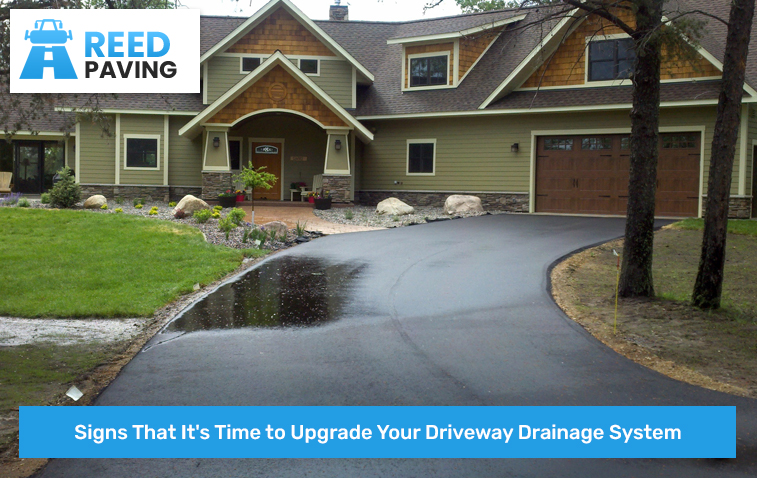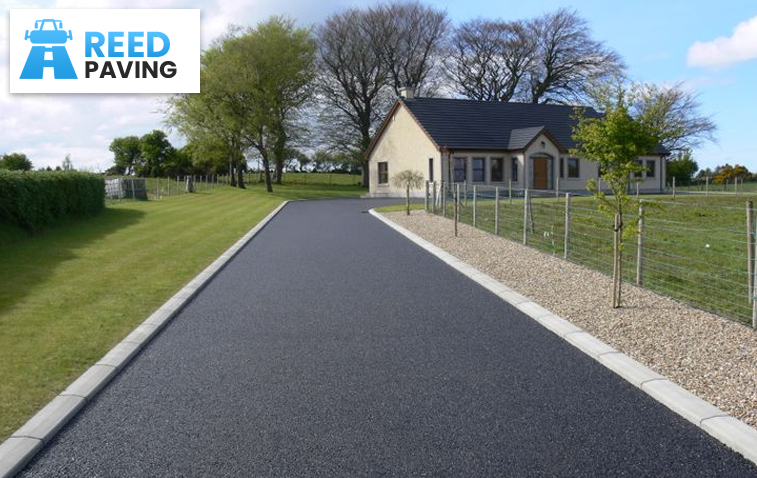Signs That It’s Time to Upgrade Your Driveway Drainage System
Driveway maintenance is often overlooked, but it is very important. If water is not drained properly, it can damage not only the driveway but also your home. A malfunctioning drainage system can lead to many serious problems such as cracks on the surface, formation of potholes and water accumulation. If these problems are not taken care of in time, it can further weaken your driveway. Upgrading the drainage system on time not only helps to avoid these problems but also increases the life of your driveway. Let us know 10 such signs that it is time to upgrade your driveway drainage system.

1. Water accumulation on the driveway
If water accumulates on your driveway for a long time after rain or flood, it is a sign of a malfunctioning drainage system.
How to identify:
If your driveway is stagnant for hours or days after a rain or flood, it is a sign of a faulty drainage system. This stagnant water gradually weakens the driveway surface, causing cracks and potholes.
Maintenance tips:
- Clean the driveway regularly and remove any standing water.
- Lay gravel or pebbles to direct the flow of water.
- Make sure the water is draining properly and the gutters are not blocked.
2. Cracks in the driveway surface
Cracks form when the drainage system does not work properly and water seeps below the driveway surface. The water expands or contracts as the weather gets colder or hotter, causing the cracks to become larger. This can weaken the driveway.
How to identify:
If you see thin or thick cracks on the driveway surface, it may be a sign that water is collecting in the driveway and is not draining properly. If not taken care of in time, these cracks can turn into potholes.
Maintenance tips:
- Use driveway filler to fill the cracks so that water cannot seep in.
- Check the drainage system before the rainy season so that water can drain out of the surface and the cracks do not grow.
- Use sealant on the surface to prevent cracks.
3. Potholes
Potholes are formed when water goes below the surface of the driveway and weakens the soil there. Due to this, the surface of the driveway starts sinking and potholes are formed. This is a sign of a fault in the drainage system which should be fixed immediately.
How to identify:
If large or small potholes start appearing on your driveway, it is a sign of a serious problem in the drainage system. If potholes are ignored, they can grow bigger, affecting the stability of the driveway.
Maintenance tips:
- Try to fill potholes immediately so that the situation does not worsen.
- Check the driveway regularly so that small cracks and potholes can be repaired in time.
- Clean drainage pipes and gutters so that water flows in the right direction and potholes do not form.
4. Soil erosion on the edges of the driveway
When the drainage system does not work properly, soil erosion begins on the edges of the driveway. Soil erosion occurs when water collects on the edges and carries away the soil. This affects the stability of the driveway.
How to identify:
If there are signs of soil erosion on the edges of the driveway, such as subsidence or the formation of mud puddles, it is a clear sign of a drainage system problem. Soil erosion can weaken the structure underneath the driveway.
Maintenance tips:
- Lay gravel or grass on the sides of the driveway so that water can drain properly and soil erosion is prevented.
- Create drainage channels on the sides of the driveway so that water can flow out in the right direction.
- Check the drainage system regularly to prevent soil erosion.
5. Moss or mold on the driveway surface
If your driveway is getting moss or mold build-up, it is a sign that water is stagnant on the driveway for a long time. Moss and mold usually thrive in wet and damp places, and it is a clear sign of a malfunctioning drainage system.
How to identify:
If you are seeing green or black spots on the driveway, it could be moss or mold build-up. This build-up gradually weakens the driveway surface and can make it slippery.
Maintenance tips:
- Clean the driveway regularly and use a brush and water to remove any moss or mold build-up.
- Check the drainage system to keep the driveway dry.
- Use a sealant on the driveway surface so that water does not penetrate the surface and cause moss build-up.
6. Persistent stains on driveway
If water stains persist on your driveway, it could be a sign of a faulty drainage system. Continuous water accumulation in one place can create stains on the surface and weaken the structure of the driveway.
How to identify:
If dark stains appear on the driveway even in dry weather, it is a sign that the water is not draining properly. This can gradually weaken the driveway surface and the water accumulation can cause further damage.
Maintenance tips:
- Clean the driveway regularly and use a power washer to remove stains.
- Check the drainage channels and make sure they are not blocked.
- Coat the driveway surface with a sealant so that water does not accumulate and stains do not form.
7. Weakening of structures near the driveway
If structures near the driveway, such as walls or stairs, start to look weak, it may be a sign of a malfunctioning drainage system. When drainage does not work properly, water can accumulate under these structures and weaken them.
How to identify:
If you see cracks in the walls or sinking of stairs, it may be a sign of a drainage system problem. This condition can also weaken the foundation of the house, requiring extensive repairs.
Maintenance tips:
- Regularly inspect the foundation of the house and surrounding structures.
- Create drainage channels to prevent water accumulation around structures near the driveway.
- Update the drainage system periodically to direct the flow of water in the right direction.
8. Unhealthy Plants Near the Driveway
If the plants or grass near your driveway look unhealthy or wilted, it could mean that the drainage system is not working properly. Too much or too little water can both affect plant health.
How to identify:
If plants look unusually dry or wet, it could be a sign that water is not draining properly near the driveway. This condition could be a sign of a fault in the drainage system that needs to be fixed.
Maintenance tips:
- Check plants regularly and make sure they are getting enough water.
- Keep an eye on the health of plants around the driveway and ensure proper water flow.
- Clean drainage gutters regularly to ensure proper drainage and proper moisture for plants.
9. Soil sinking under the driveway
If the soil beneath the driveway is sinking or the driveway looks uneven, it could be a sign of a drainage problem. This problem occurs when water weakens the soil beneath the driveway, causing the driveway surface to sink.
How to identify:
If the surface of your driveway has become uneven or shows signs of sinking, it is a sign of a drainage problem. This can weaken the structure of the driveway and can turn into a bigger problem if not taken care of in time.
Maintenance tips:
- Inspect the driveway regularly and fix any unevenness immediately.
- Upgrade the drainage system from time to time so that water flows properly.
- Seek the help of a drainage specialist to check the soil and make sure the soil remains strong.
10. Cracks on Driveway After Freezing
Cracks can appear on the surface of the driveway due to freezing of water during the cold season. This happens when the drainage system does not work properly and water collects beneath the driveway. When the water freezes, it expands the surface and causes cracks to form.
How to Identify:
If you start seeing cracks on the surface of the driveway after the cold season, it could be a sign that the drainage system needs to be upgraded. Ignoring the cracks can worsen the problem.
Maintenance Tips:
- Check the driveway before winter and make sure that the water is draining properly.
- Use sealant on the driveway so that water does not go below the surface and freezes in the cold.
- Use filler to fill the cracks and prevent them from growing.
Conclusion
Proper maintenance of the driveway and periodic checking of the drainage system is very important. If these signs are noticed in time, you can increase the life of your driveway and ensure the safety of the house. Small changes made at the right time can save you from big expenses in the future.
FAQs
The drainage system should be checked at least twice a year, especially before the rainy and cold seasons. This will help identify and fix any problems in time.
Yes, if the soil is eroding on the sides of the driveway, it is a sign of a drainage problem. Soil erosion indicates that water is not flowing properly and needs to be fixed.
The accumulation of moss and mold on the driveway not only weakens the surface of the driveway but it can also be slippery, which poses a risk of injury. It is important to clean it on time.
Potholes should be filled immediately as soon as they develop in the driveway. Ignoring potholes can cause them to grow larger and further weaken the structure of the driveway.


